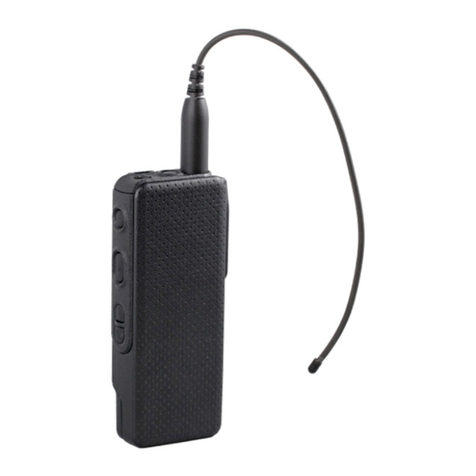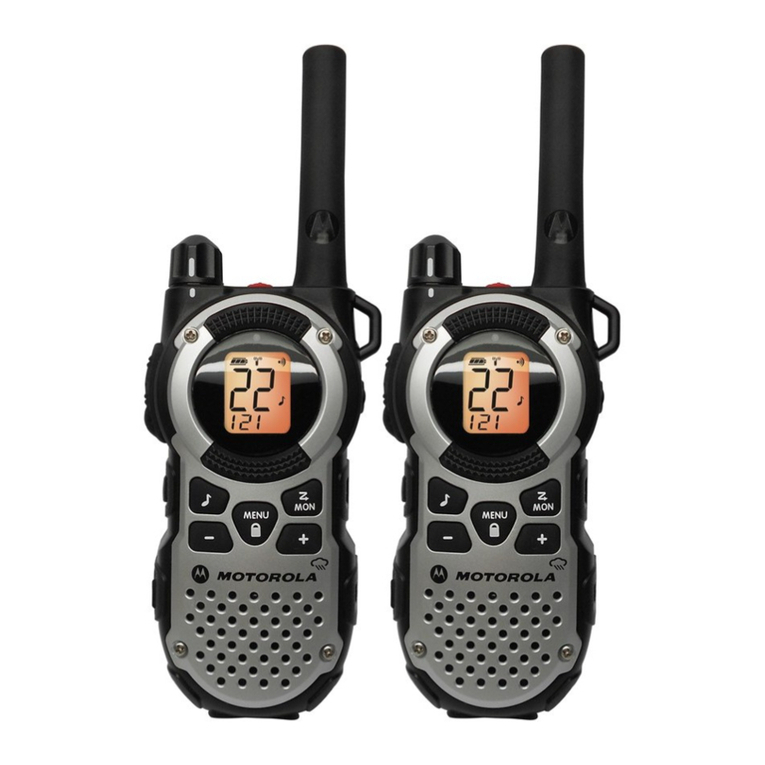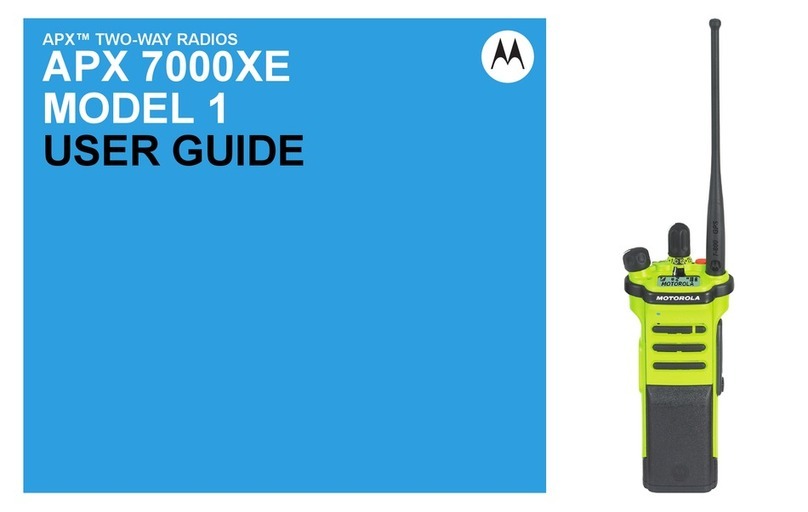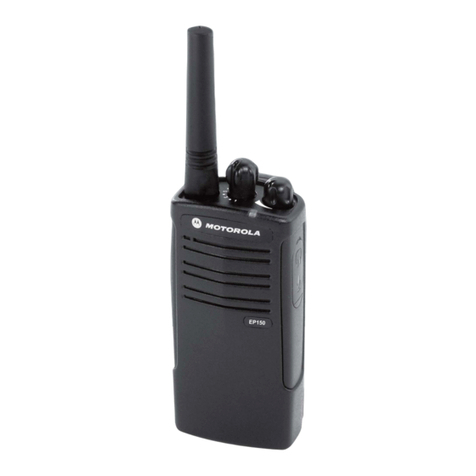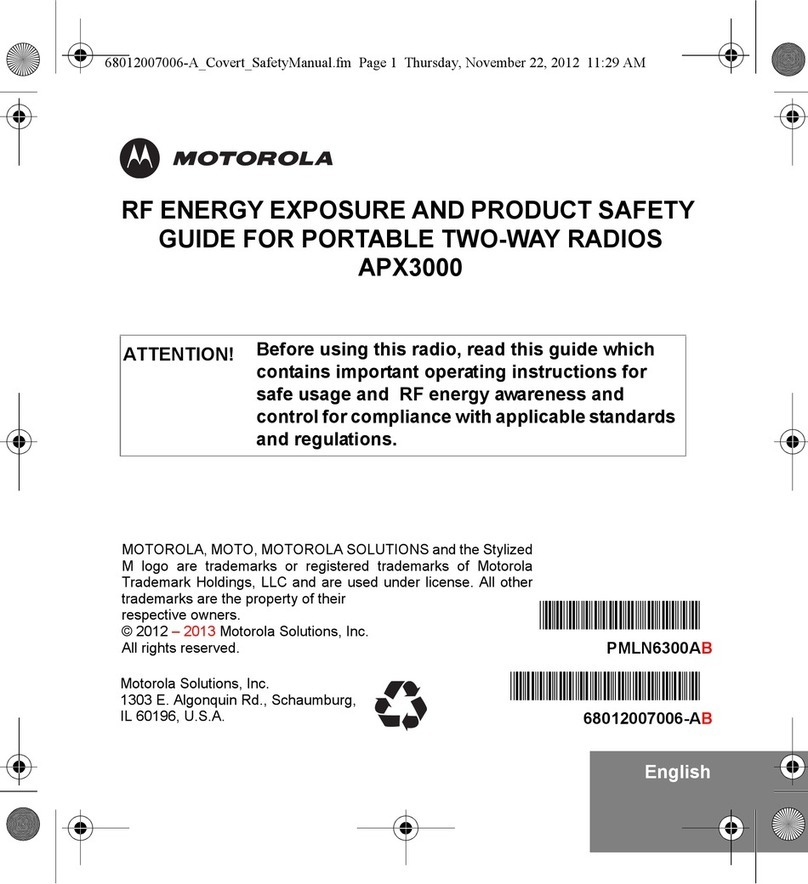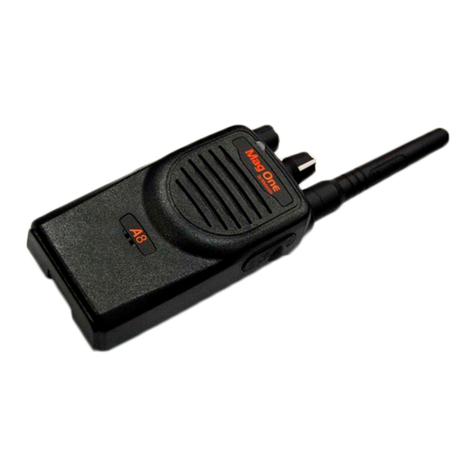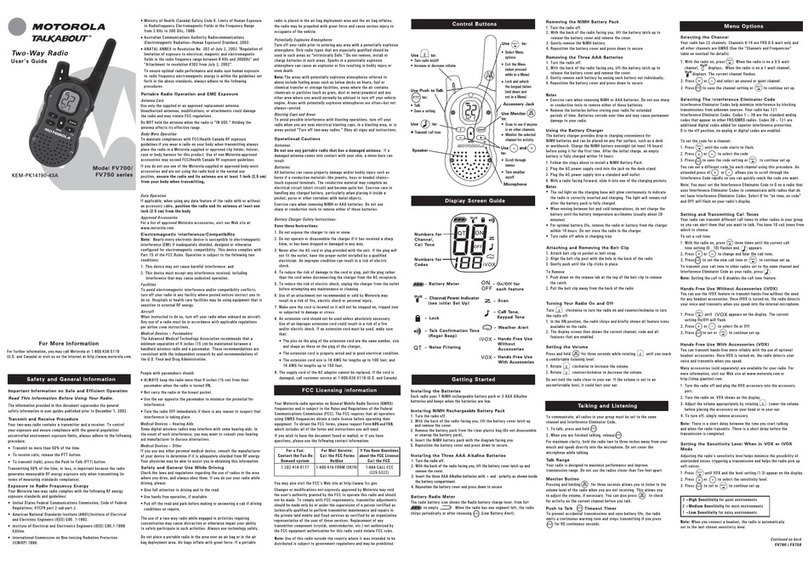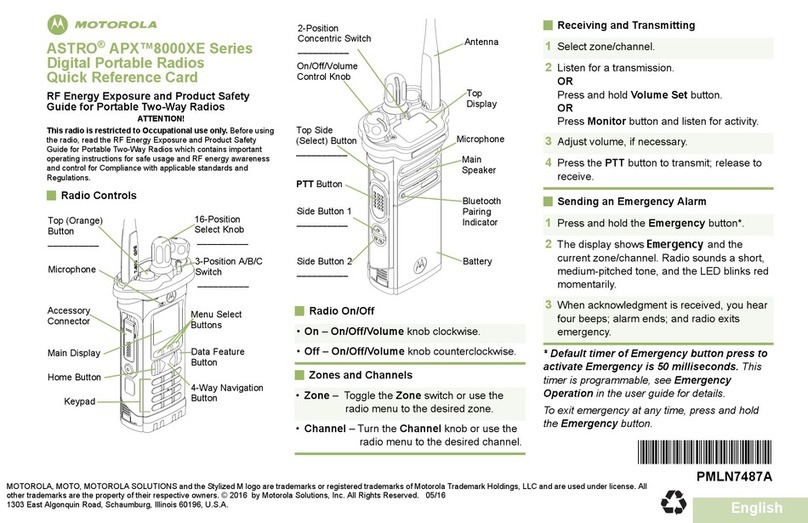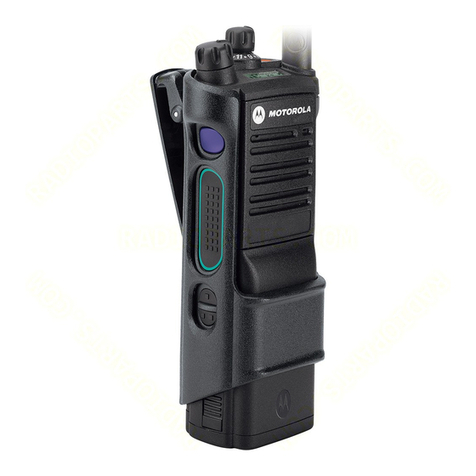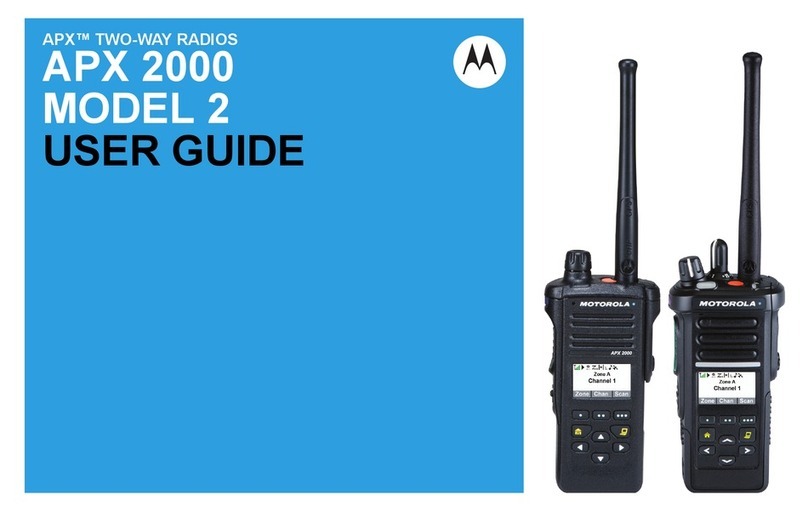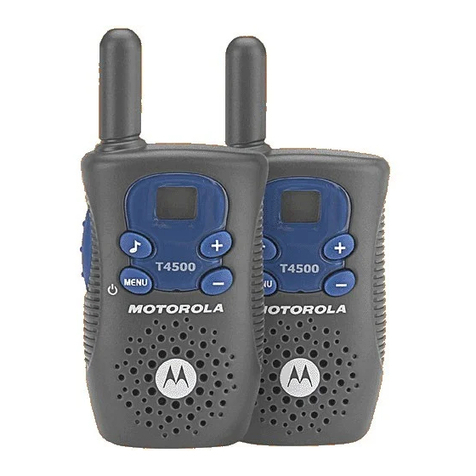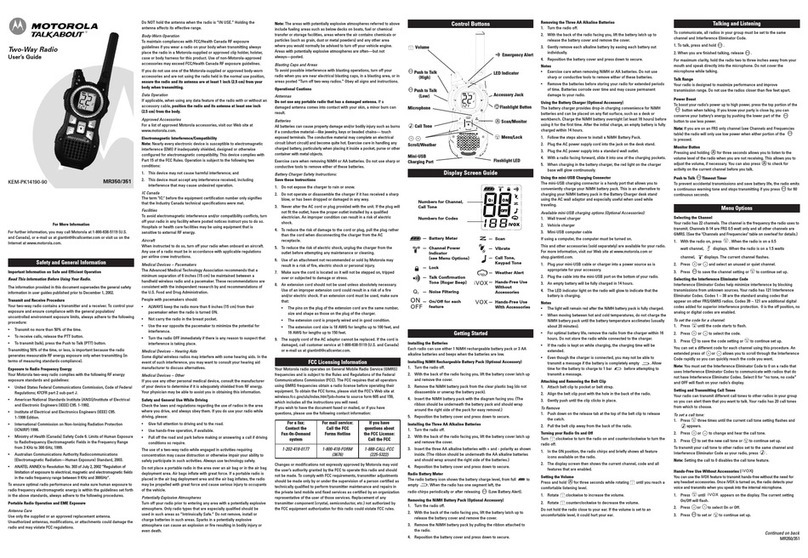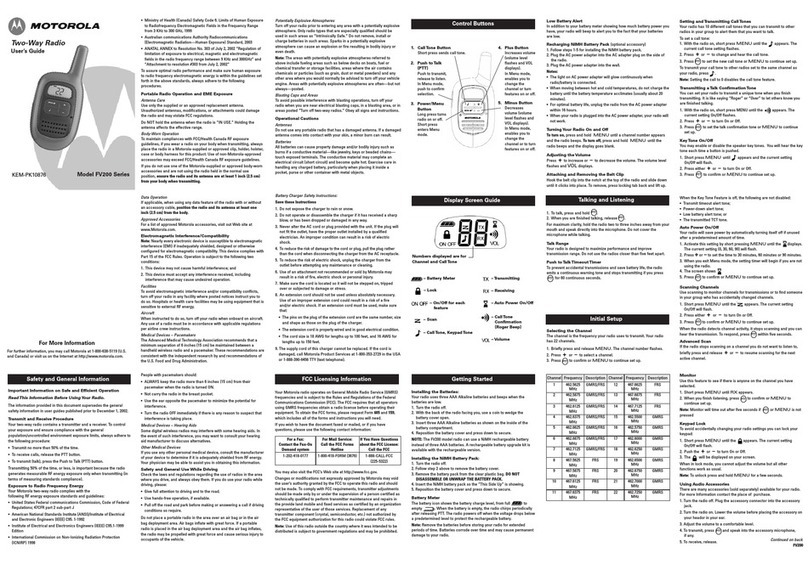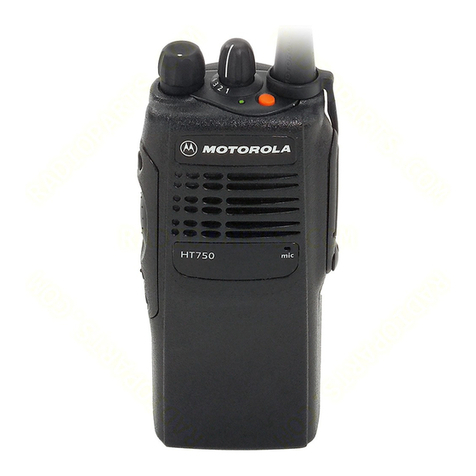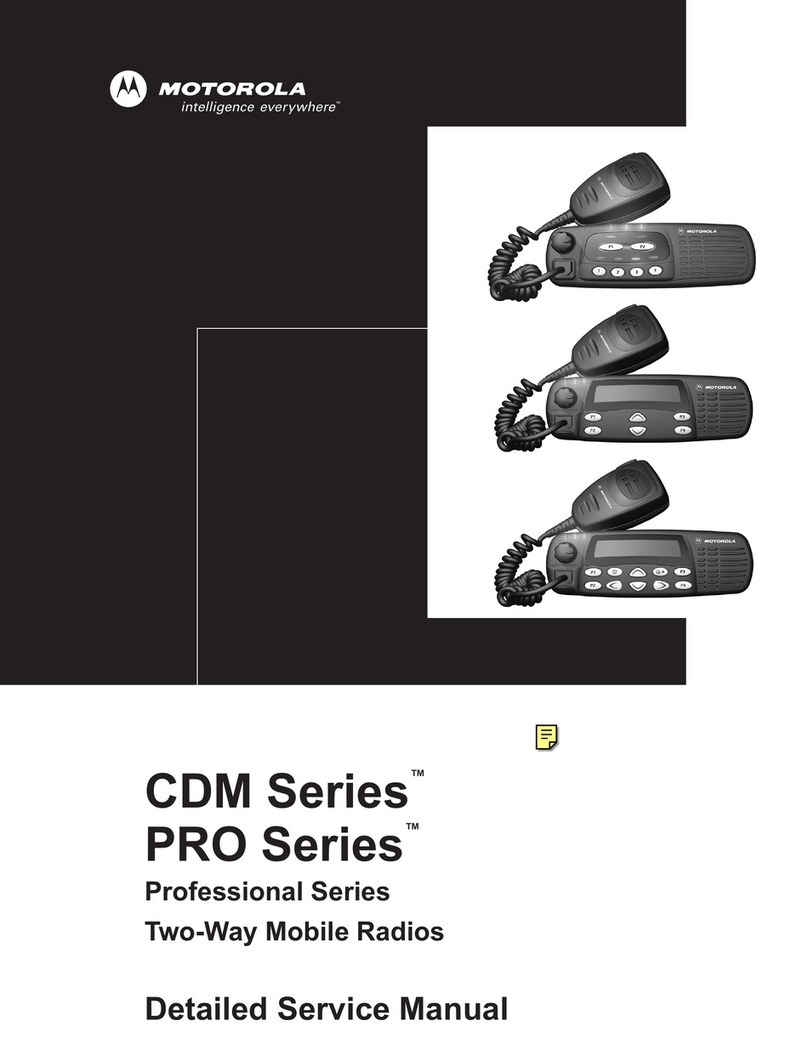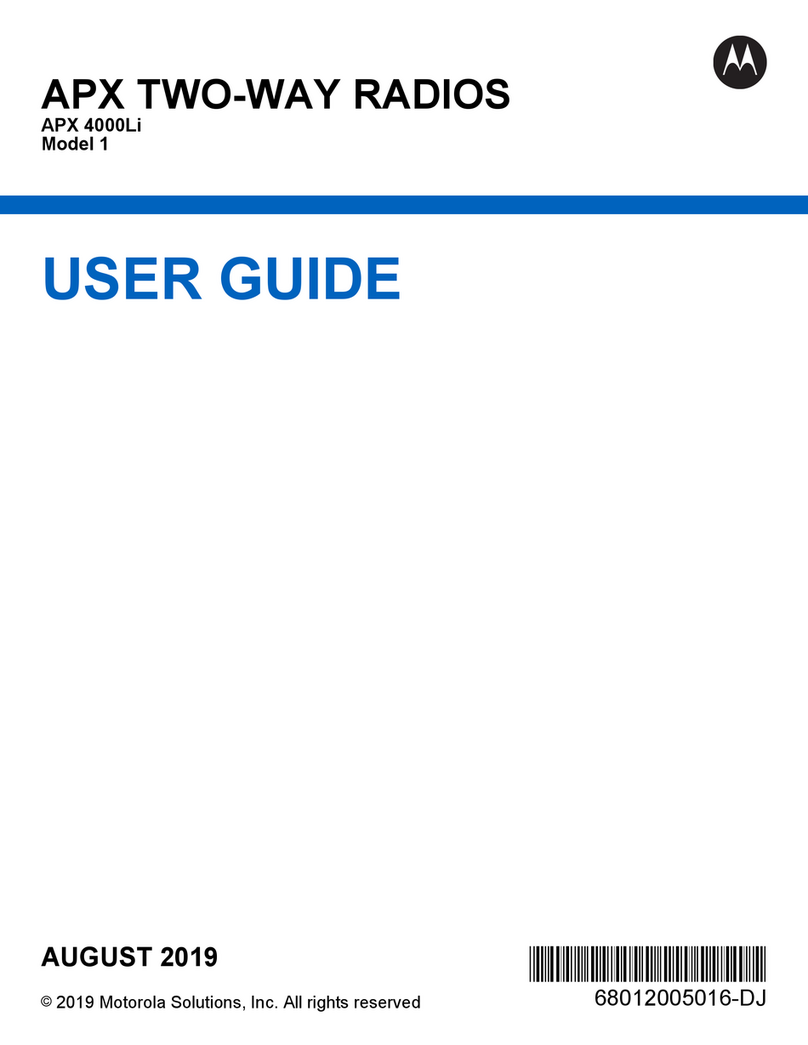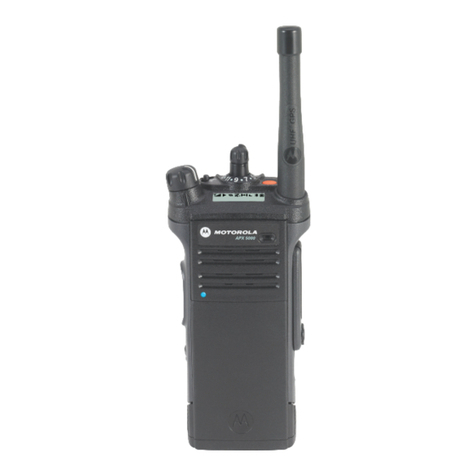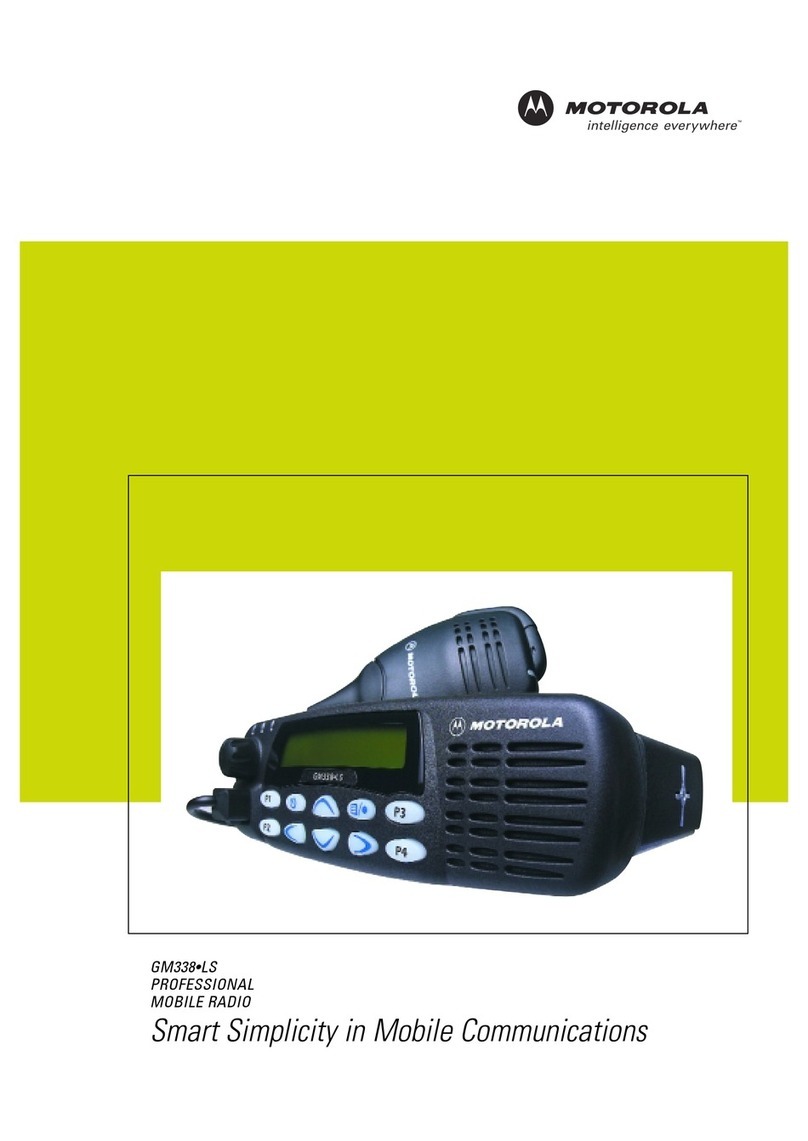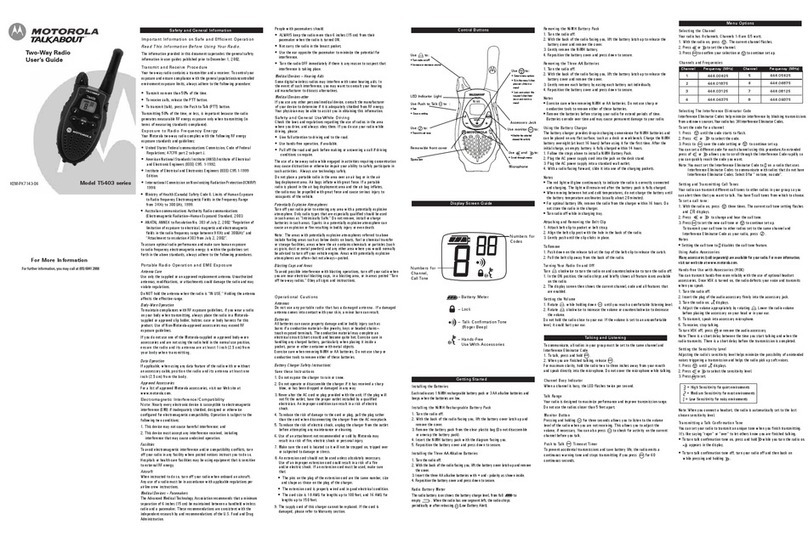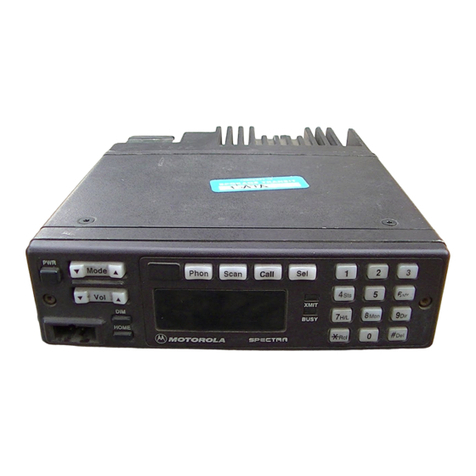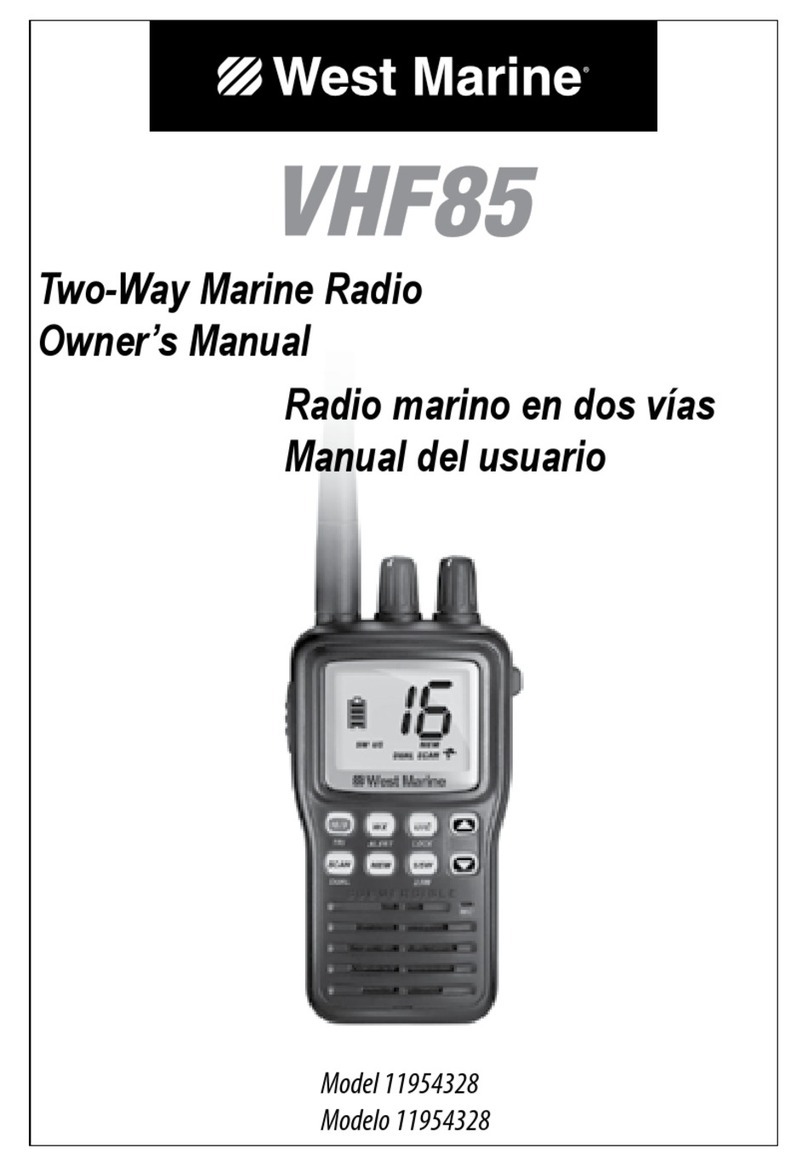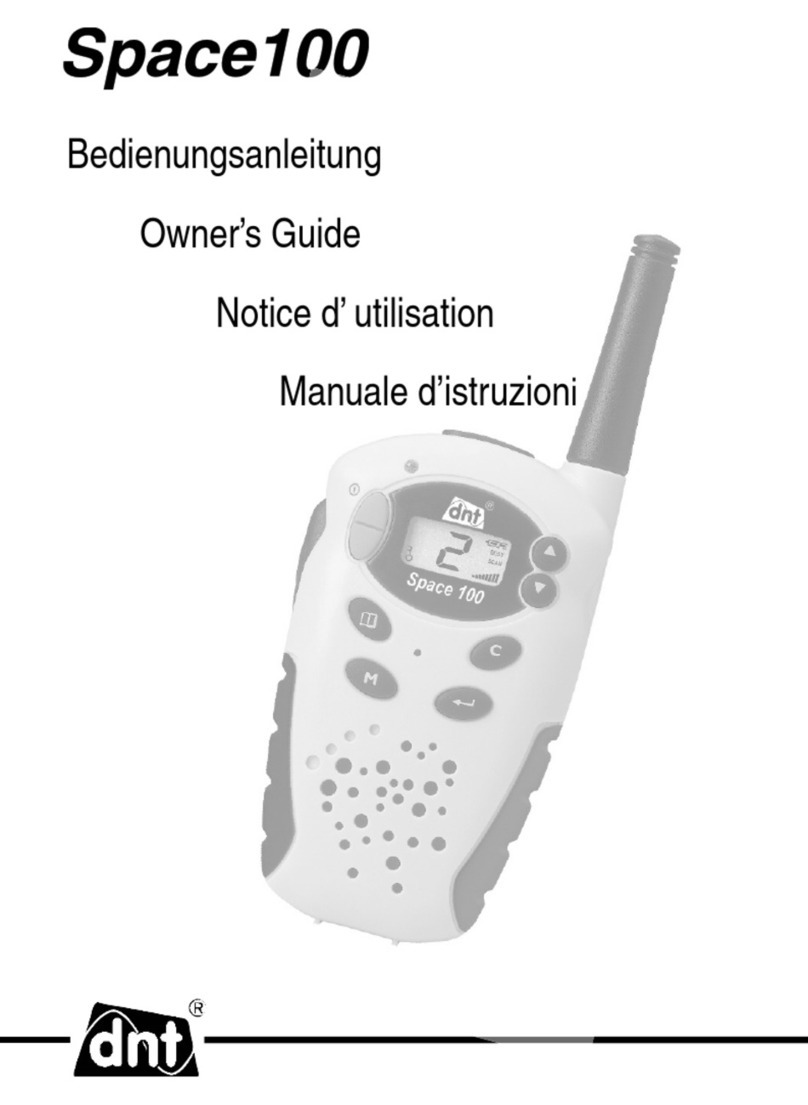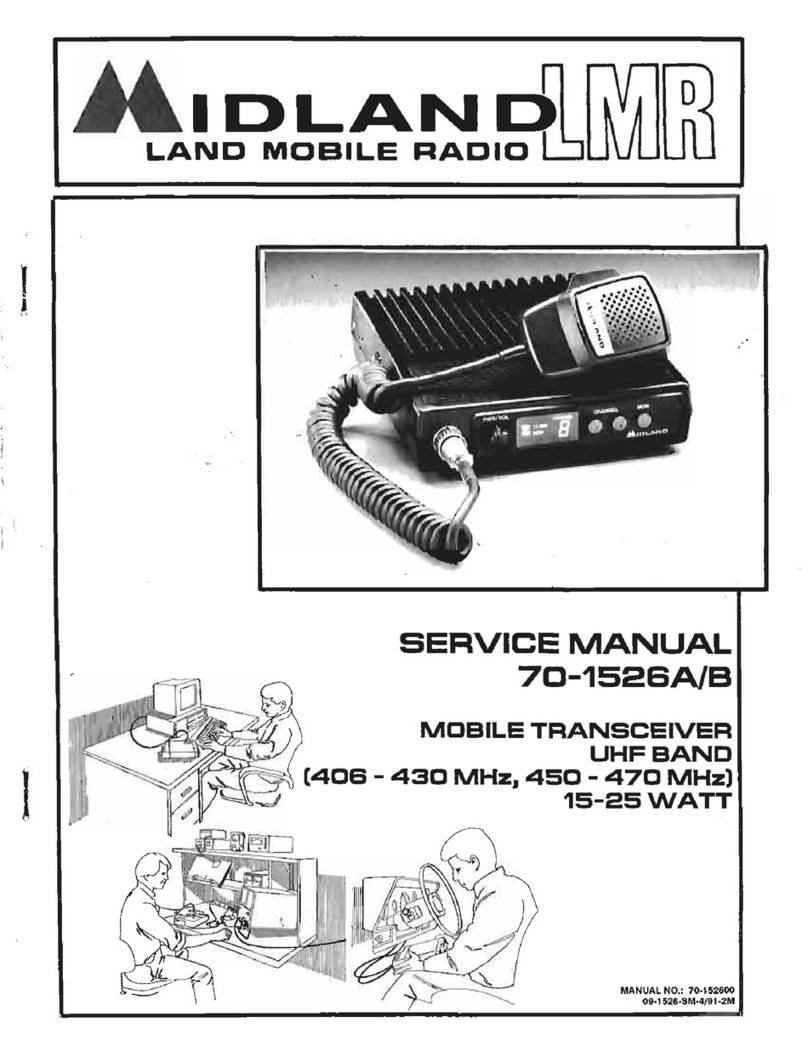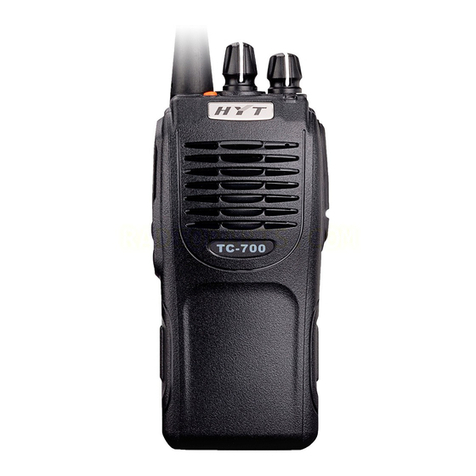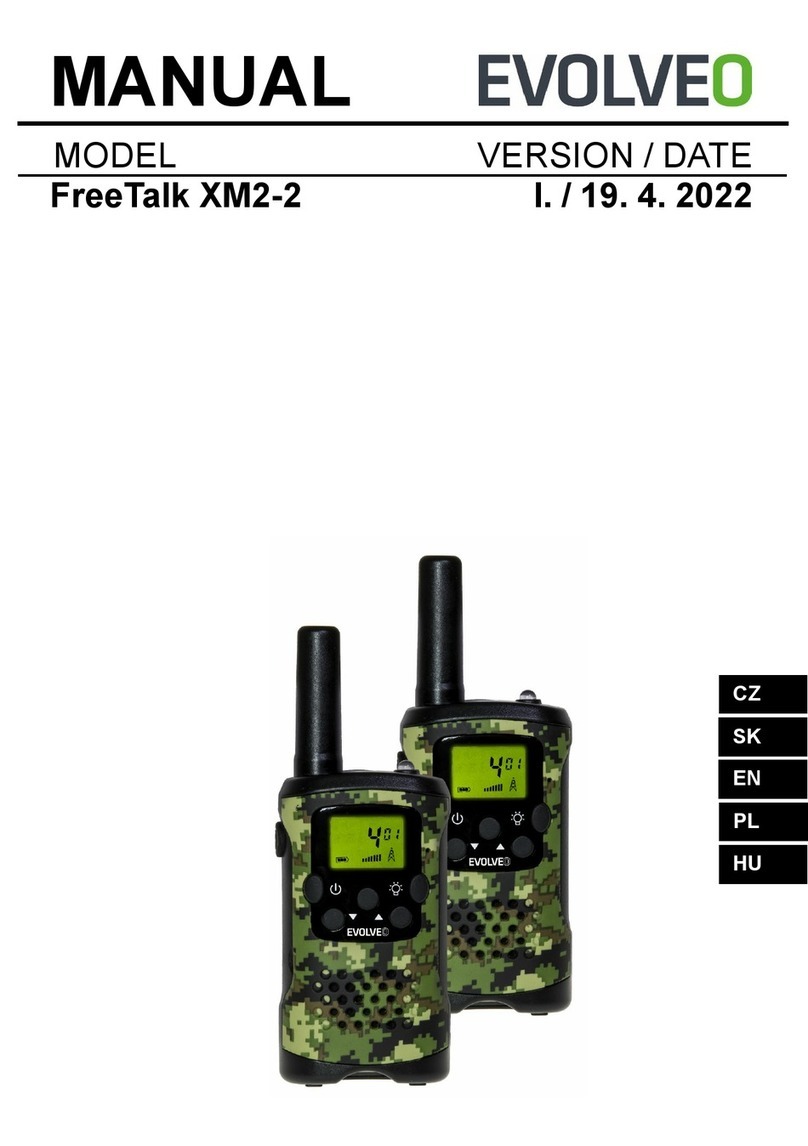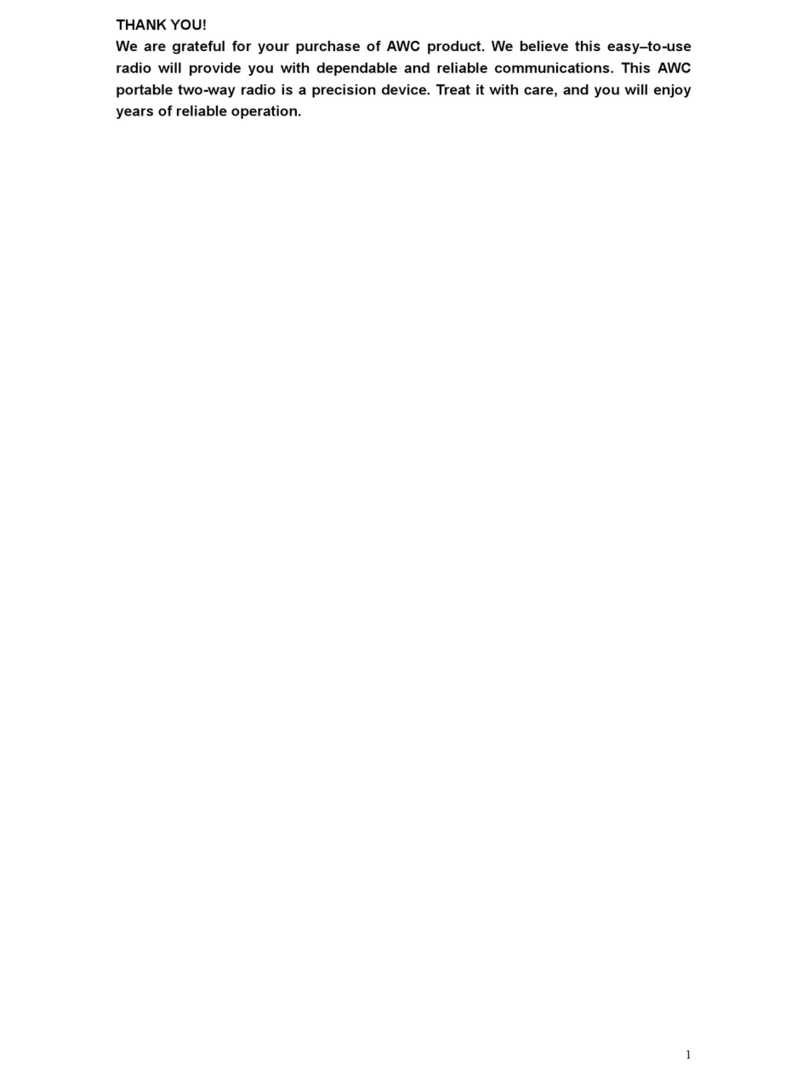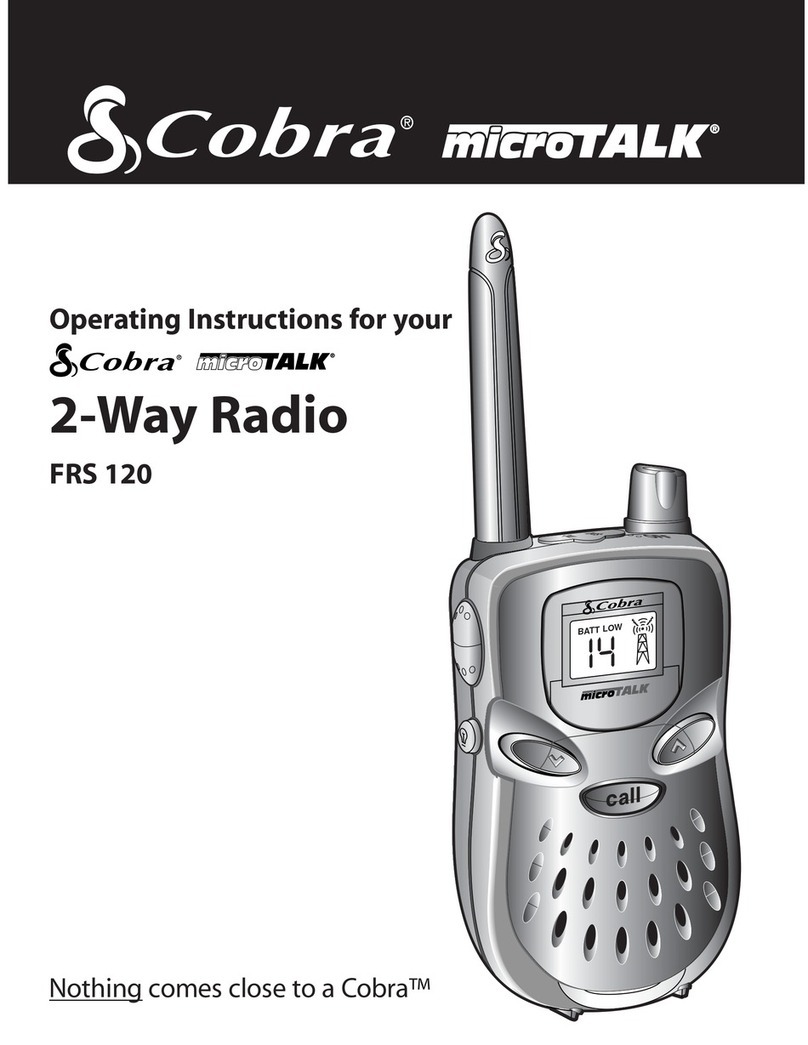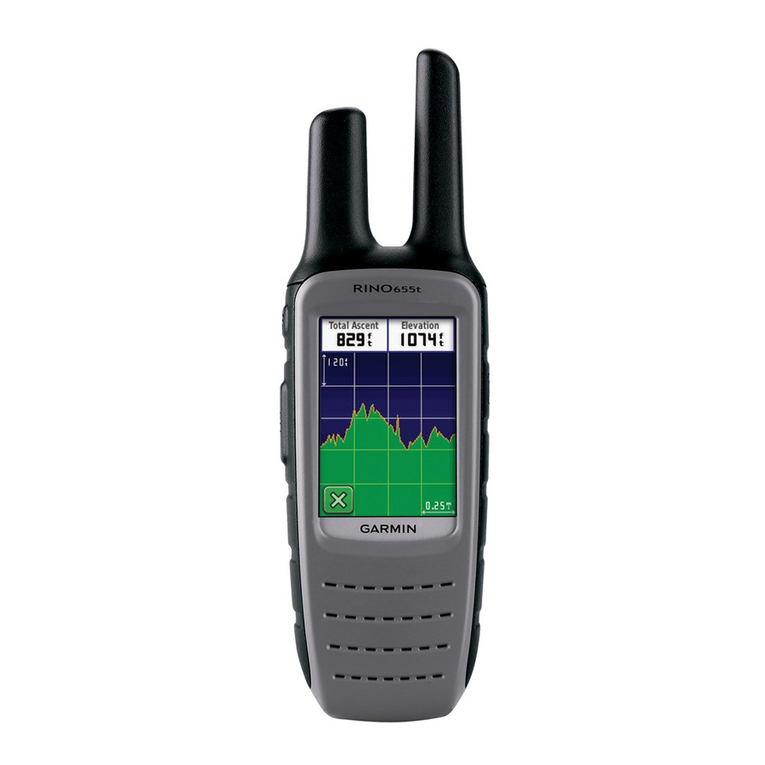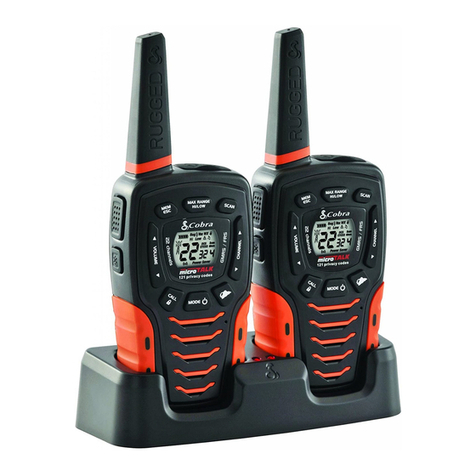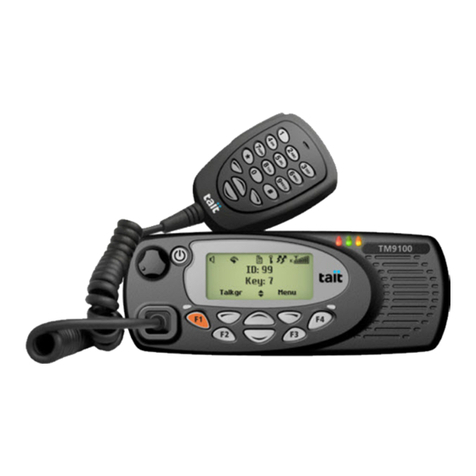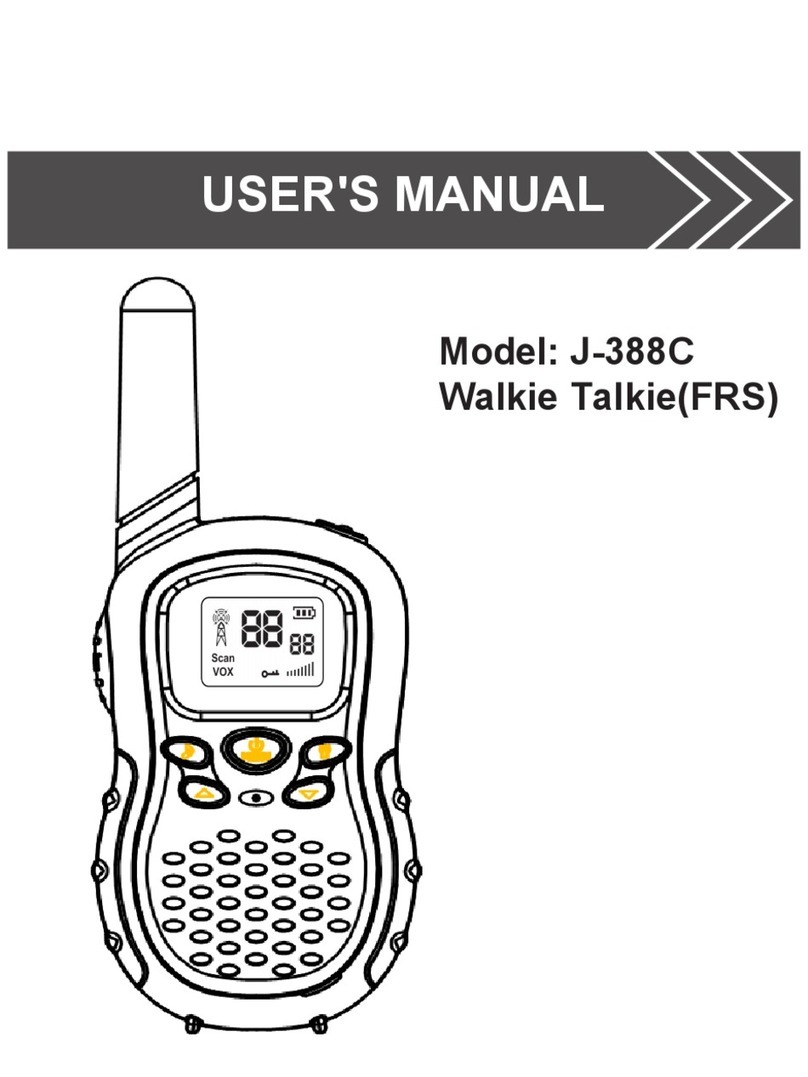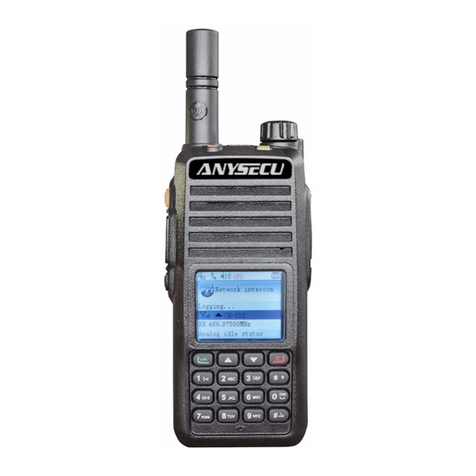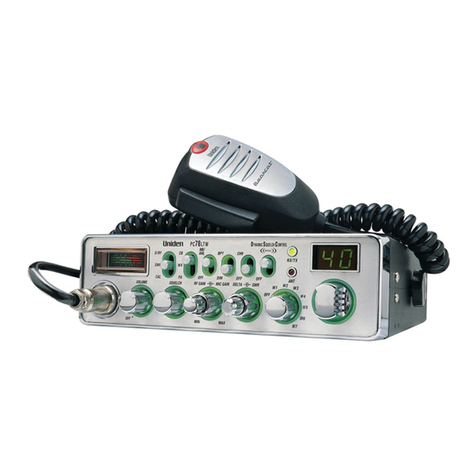Two-Way Radio
User’s Guide
Display Screen Guide
For More I nformation
For further information, youmay call Mo to rola at 1-800-638-5119
(U.S. and Canada), e-mail us at giantintl@callcenter.com orvisit
us onthe Internet atwww.motorola.com.
MC Series
Safety and General Information
Important Information on Safe and Efficient
Operation
Read This Information Before Using Your Radio.
The informationprovided in this document supersedes the general
safety informationin user guides published prior to December 1, 2002.
Transmit and Receive Procedure
Your two-way radio contains a transmitter and a receiver. To
control your exposure and ensure compliance with the
general population/ uncontrolled environment exposure
limits, always adhere tothe following procedure:
•Transmit no more than 50% of the time.
•To receive calls, release the Push to Talk (PTT) button.
•To transmit (talk), press the PTT button.
Transmitting 50% of the time, or less, is important because
the radio generates measurable RF energy exposure only
when transmitting (in terms ofmeasuringstandards
compliance).
Exposure to Radio Frequency Energy
Your Motorola two-way radio complies with the followingRF
energy exposure standards and guidelines:
•United States Federal Communications Commission, Code
of Federal Regulations; 47CFR part2 sub-part J.
•American National Standards Institute (ANSI)/Institute of
Electrical and ElectronicEngineers (IEEE) C95. 1-1992.
•Institute of Electrical and Electronics Engineers (IEEE)
C95.1-1999 Edition.
•International Commission on Non-Ionizing Radiation
Protection (ICNIRP) 1998.
•Ministry of Health (Canada) Safety Code 6. Limits of Human
Exposure to Radiofrequency Electrom agnetic Fields in the
Frequency Range from 3 KHz to 300 GHz, 1999.
•Australian Communications Authority
Radiocommunications (Electromagnetic Radiation—Human
Exposure) Standard, 2003.
•
ANATEL ANNEX to Resolution No. 303 of July 2, 2002 “Regulation of
limitation of exposure toelectrical, magnetic and electromagnetic
fields in the radio frequency range between 9 KHz and 300GHz”.
To ensure optimal radio performanceand make sure human
exposure to radiofrequency electromagnetic energy is within the
guidelines set for th inthe abovestandards, always adhere tothe
followingprocedures.
Portable Radio Operation and EME Exposure
Antenna Care
Use only the suppliedor an approved replacement antenna.
Unauthorized antennas, modifications, or attachments could damage
the radio and may violate FCCregulations .
Do NOT hold the antenna when the radio is “IN USE.” Holding the
antenna aff ec ts its effective range.
Body-Worn Operation
To maintai n compliances with FCC/Health Canada RF exposure
guidelines ifyou wear a radio on your body when transmitting
always place the radio in a Motorola-supplied or approved clip
holder, holster, case or body harness for this product. Use of
non-Motorola-approved accessories may ex ceed FCC/Health Canada
RF exposure guidelines.
If you do not use one of the Motorola-supplied or approve d
body-worn ac cessories and a re not using the radio held inthe
normal use position,
ensure the radio and its antenna are at
least 1 inch (2.5 cm ) from your body when transmittin g
.
Data Operat ion
If applicable, when using any data feat ur e of the radio with or
without an accessory ca bl e,
position the radio and its antenna
at least one inc h (2.5 cm) from the body
.
Approved Accessories
Foralist of approved Motorola accessories, visit our Web site at
www.motorola.com.
Electromagnetic Interference/Compatibility
Note:
Nearly every el ectronic device is su sceptible to
electromagnetic interferenc e (EMI) if inadequate ly shielded,
designed orotherwise configured for electromagnetic compatibility.
This device complies with Part 15 of the FCC Rule s.
Operation is subject to the following two conditions:
1. This device may not cause harmful interference; an d
2. This device must accept a ny interference received, including
interference that may cause undesired operation.
IC Canada
The term "IC:" before theequipment certification number only
signifies that the Industry Canada technical specifications were met.
Facilities
To avo id electromagnetic interference a nd/or compatibility conflicts,
turn off your radio in any facility where pos ted notices instructyou
to do so. Hospitals or health care facilities may be using equi pment
that is sensitive to external RF energy.
Aircraft
When instructed to doso, turn off your radio when onboardan
aircraft. Any us e of a radio mu st be in accordance with applica ble
regulations per airline crew instructions .
Medical Devices –Pac em akers
The Advanced Medical Technology Association recommends that a
minimum separation of 6 inches (15 cm) bemaintained between a
handheld wireless radi o and a pacemaker. These recommendations
are consistentwiththe independent researc h by and
recommendations of the U.S. Food and Drug Administration.
People with pacemakers should:
•ALWAYS keep the radio more than 6 inches (15 cm) from their
pacemaker when the radio is turned ON.
•Not carry the radio in the breast pocket.
•Use the ear opposite the pacemaker to minimize the potential for
interference.
•Turn the radio OFF immediately if there is any reason to suspect
that interference is taking place.
Medical Devices – Hearing A ids
Some digital wireless radios may interfere with some hearing ai ds.
In the event ofsuc h interference, you may want to consultyour
hearing ai d manufa cturer to discuss alternatives.
Medical Devices – Ot her
If you use any other personal medic al device, consultthe
manufacturer o f your device to determineif itis adequately shielded
from RF energy. Your physicianmay be able to assistyou in
obtaining this information .
Safety and General Use While Driving
Check the laws and regulations regarding the use of radio s in the
area where you drive, and always obey them. If you do us e your
radio while driving, please:
•Give full attention to driving and to the road.
•Use hands-free operation, if av ailabl e.
•Pull off the road and park before making or answering a call if
driving conditions so require.
The use of a two-way radio while engagedin activities requiring
concentrationmay cause distraction or otherwise impair your ability
to safely participate insuch activities. Always use technology safely.
Do not pl ace a po rtable radio inthe area over an air bag orinthe air
bag deployment area. Ai r bags inflate with great force. If a po rtabl e
radio is placed in t he air bag de ployment areaand the air bag
inflates, the radiomay be propelledwith greatforce and cause
serious injury to occupants of the vehic le .
Potentia lly ExplosiveAtmospheres
Turn off your radio prior to entering any areawithapotentially
explosive atmosphere. Only radio types that are especially qual ified
should be used insuch areas as “Intrinsically Safe.” Do not remove,
install or charge batteri es insuch areas. Sparks in a potenti ally
explosive atmosphere can cause an explosion or fire resulting in
bodily injury or ev en death.
Note:
The ar eas with potentia lly explosive atmospheres referred to
above include fueling areas such as belo w decks on boats, fuel or
chemical transf er orstor age facilities, areas where the air contains
chemicals or particles (such as grain, dustor metal powd ers) and
any ot he r area where you would normally be advised to tur n off your
vehicle engine. Areas with potenti ally explosive atmospheres ar e
ofte n— but not always—posted.
Blasting Caps and Areas
To avoid possible interference with blasting ope rations, turn off your
radio when you are near el ec trical blasting caps, in a blasting area,
or in areas posted “Turn off two-way radio s.” Obey all signs and
instructions.
Operational Cautions
Antennas
Do not use any portable radio t hat has adamaged antenna.
If
a damaged antenna comes into contact with your skin, a minor burn
can result.
Batteries
All batteries can cause property damage and/or bodily injury such as
burns if a conductivematerial—likejewelry, keys or beaded chains—
touch exposed terminals. The conductive material may complete an
electrical circuit (short circuit) and become quite hot. Exercise care
in handling any charged battery, particularly when placing it inside a
pocket, purse or other container with metal objects.
Exercise care when remo ving NiMH or AA batterie s. Do not use
sharp or conductive tools to remov e either of these batteries.
Battery Charger Safety Instructio ns:
Save these Instructions
1. Do not expose the cha rger to rain or snow.
2. Do not operate ordisassemble t he c harger if it has received a
sharp blow, or has been dro pped or damaged in any way.
3. Never a lter the AC cord or p lug provided with the unit. If the plug
will not fit the outlet, have the prope r outlet installed by a
qualified el ectrician. An im proper condition can result in a ri sk of
electric shock .
4. To reduce the risk of damage to the cord or plug, pull the plug
rather thanthe cordwhen disconnecting the charger from the AC
receptacle.
5. To reduce the risk of el ectric shock, unplug the charger from the
outletbef or e attempting any maintenance or cleaning.
6. Use of an attachment not recommended or sold by Motorola ma y
result in a r isk of fire, el ectric shock or personal injury.
7. Make sure the cord is located so itwill not be stepped on,
tripped over or subjected to damage or stress.
8. An extension cord should not be u sed unl ess absolutely
nece ssary. Use of an improper extension cord could result in a
risk of a fire and/or el ectric shock. If an e xtension cord must be
used, mak e sure that:
•The pins on the plug of the extension cord are the sa me
number, size and shape as those on the plug of the charger.
•The extension cord is properly wired and in good el ectrical
cond ition.
•The extension cord sizeis 18 AWG for lengths up to 100 feet,
and 16 AWG for lengths up to 150feet.
9. The supply cord of the AC adaptor cannot be replaced. If the cord
is damaged, call customer service at 1-800-638-5119 (U.S. and
Canada).
FCC Licensing Information
Your Motorola radio operates on General Mobile Radio Service
(GMRS) frequencies and is subject to the Rules and Regulations of
the Federal Communica ti ons Commission (FCC). The FCC requires
that all operators using GMRS frequencies obtain a radio license
befo re opera ting their equipment. To obtain the FCC forms, please
visit the FCC’s Web site at wireless.fcc.gov/uls/index.htm?job=home
to source form 605 and 159, which include all the instructi ons yo u
will need.
If youwish tohave the document faxedormailed, or ifyou have
questions, please use th e following contact information:
For a fax: For mail service: If you have questions
Contact theFax-On Call the FCC about the FCCLicense:
Demand system Forms Hotline Call the FCC
1-202-418-0177 1-800-418-FO RM 1-888-CALL-FCC
(3676) (225-5322)
Changes or modifications not ex pr essly approved by Motorola may
void the user ’s authority grant ed by the FCC to o perate this radio and
should not be made. To comply with FCC requirements, transmitter
adjustments should be made only by or under the supervision of a
person certifiedas technically qualifiedto perfo rm transmitter
maintena nceand repairs in the private lan d mobile and fixed
services as certified by an organization representative of the user of
thoseservices. Replacement ofany transmitter c omponent (crystal,
semiconductor, etc.) not authorized by the FCC equipment
authorization for this radio could viol ate FCC rules.
Note:
Use of this radio outside the country where itwas intended to be
distributed is subject to government regulations and may be pro hibited.
Getting Started
Installing the Batteries
Each radio can use either 1 NiMH rechargeable battery pack or 3 AA
alkaline batteries and beeps when the batterie s are low.
Installing NiMH Rechargeable Battery Pack
1. Turn the radio off.
2. With the back of the radio facing you, lift the battery cover latch
up and remove the cover.
3. Remove the battery pack from the c lear p lastic bag (do not
disassembl e or unwrap the battery pack) .
4. Insert the NiMH battery pack with the diagram facing you.
5. Reposition the batter y cover and press down to sec ure.
Installing the Three AA Alkaline Batteries
1. Turn the radio off.
2. With the back of the radio facing you, lift the battery cover latch
up and remove the cover.
3. Insert the three AA alkaline batteries with + and - polarit y as
showninside.
4. Reposition the batter y cover and press down to sec ure.
Radio Battery Meter
The radio b at tery icon shows the battery charge level, f rom
full to empty . When the radio has one segm en t left,
the radio chirpsperiodically or after releasing (Low B attery
Alert).
Removing the NiMH Battery Pack (Optional Accessory)
1. Turn the radio off.
2. With the back of the radio facing you, lift the battery latch up to
release the battery cover and remove th e cover.
3. Gently remove the NiMH battery.
4. Reposition the battery cover and press down to se cu re.
Removing the ThreeAA Batteries
1. Turn the radio off.
2. With the back of the radio facing you, lift the battery latch up to
release the battery cover and remove th e cover.
3. Gently remove each battery b y easing each battery out
individually.
4. Reposition the batter y cover and pr ess down tosecure.
Notes
•Exercise care when remo ving NiMH or AA ba tteries. Do not use
shar p or co nductive tools to remove e ither of these batteries.
•Remove the batteries before storing your radio for ext ended
periods of time. Batteries corrode over time and may ca use
permanent dama ge to your radio.
Using the Battery Charger
The battery charger provides drop -i n charging convenience for
NiMH batteries and can be pl aced on any fl at surface, such as a
desk or workbench. Charge the NiMH battery overn ig ht (at least 16
hours) before using it for the fir st time. After the in itial ch arge, an
empty battery is fully charge d within 14 hours.
1. Follow the steps above t o ins tall a NiMH Battery Pack.
2. Plug the AC power supply cord into the jack on the d es k stand.
3. Plug the AC power supply int o a standard wall outlet.
4. With a radio facing forward, slideit into one ofthe chargi ng
pockets.
5. When charging the batte ry charg er, the red light on the charger
basewill glow continuously.
Notes
•The light will remain red after the NiMH batte ry pac k is fully
charged .
•When moving between hot and cold temperatures , do not charge
the NiMH batterypack until the battery temperature acc limates
(usually about 20 minutes ).
•For optimal battery life, remov e the radio or battery from the
charger within16 hours. Do n ot store the radio while connected
to the charge r.
•Turn radio off while in charging tray.
Attaching and Removing the Belt Clip
1. Attach belt clip to pocket or belt strap.
2. Align the belt clip post with the hole in the back of the radio.
3. Gently push until the clip click s in pl ace.
To Remove
1. Push down on the release tab at the top of the belt clipto relea se
the catch.
2. Pull the belt clip aw ay from the backof the r adio.
Turning Your Radio OnandOff
Turn clockwise to turn the radio on and counterclockwise to
turn the radi o off.
1. In the ON position, the radi o chirps and briefly shows all feature
icons available on the radio .
2. The display sc reen then shows the c urrent channel, codeand all
features that are ena bl ed.
Setting the Volume
Press and hold for three seconds while rotating un til you
reach a comfortab le listeningleve l.
1. Rotate clockwise to increase the vol um e.
2. Rotate counterclockwise to decrease the volume.
Do not hold the rad io close to your ear. If the volume is set to an
uncomfortab le level, it coul d hurt your ear.
Talking and Listening
To communicate, all radios in your group must be set to the same
channel an d Interfere nce Eliminator Code.
1. To talk, press and hol d .
2. When you are finished talking,releas e .
For maximum clarity, hold the radio two to threeinches away from
your mouth and speak directly into the microphone . Do no t cover the
microphone while talking.
TalkRange
Yourradio is designed tomaximize performanceand improve
transmission range. Do not use the radios closerthan five feet apart.
Monitor Button
Pressing and holding for three seconds allows you to li sten to
the volum e level of the radio when you ar e not receiving. This allows
you to adjust the volum e, if necessary. You can also press to
check for activit y on the current channel before you t alk.
Push-to-Talk Timeout Timer
To prevent accidental transmissions a nd save battery life, the radio
emits a continuous warni ng tone and stops transmitting if you press
for 60 continuous sec on ds.
KEM-M L3610 0
Menu Options
Selecting theChannel
Your radio has 22 channels. The channel is the frequency the radio
uses to transmit. Channels 8-14 are FRS0.5 watt only and all other
channe ls are G MRS. (See the "Channels and Frequencies" table on
overleaf for details.)
1. With the radio on, press . Whenthe radi o is on a0.5 watt
channel, displays. When the radio is ona1 watt channel,
displays. The current channel flashes.
2. Press or and select a n unused or qu iet channel.
3. Press to sa ve the c hannel setting or to continue set up.
Selecting the Interference Eliminator Code
Interference Eliminator Codes help minimize interference by blocking
transmissions from unknown sources. Codes 1–38 are the standard
analog codes that appear on other FRS/GMRS radios. 0 is the off
position, no codes are enabled.
To set thecode fora channel:
1. Press until the code st arts to fl ash.
2. Press or to select the code.
3. Press to sa ve the c ode setting or to continue set up.
You can set a different code for each channel using this procedure.
An extended press ofor allows you to scroll through the
Interference Codes rapidly so you can quickly reach the code you want.
Note:
You must set the InterferenceEliminator Codeto0 on a radio
that uses Interference EliminatorCodes to communicate with ra dios
that do not have Interference Elimin at or Codes. Select 0 for “n o
tone, no code” and OFF will flash on you r radio’s displa y.
Setting and Transmitting Call Tones
Your radio can transmit different call tones to other radios in your
group soyou can alert them tha t you want to talk. Your radio has
5 call tones.
To set a call tone:
1. With the radio on, pressthree times until the current call tone
setting (0 -5 ) flashes and CA displays .
2. Press or to chang e and hear the call tone.
3. Press to se t the new call tone or to co ntinue set up.
To transmit your call tone to othe r radios set to the same channel
and Interference EliminatorCode as yourradio, press .
Note:
Setting the call to0 disables the call tone feature.
MC Series
Numbers
for Codes
Numbers for
Channel,Call Tone
- Battery Meter
- Channel Power
Indicator
- Lock
- Scan
- NoiseFiltering
- Hands-Free
(VOX)
- Talk Confirmation
Tone (Roger Beep)
Menu/Lock
Accessory Jack
Scan/Monitor
Scroll
Microphone
Control Buttons
Volume
Call Tone
Speaker
LED indicator
Push-to-Talk
(PTT)
